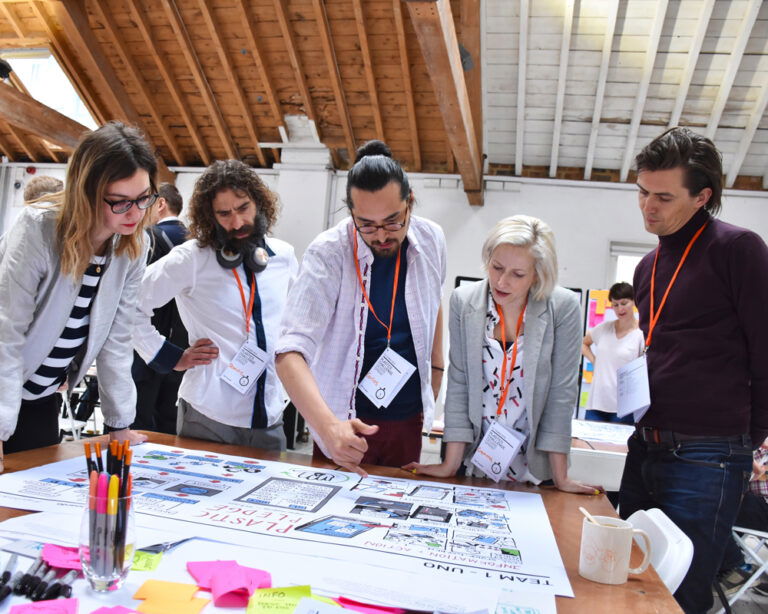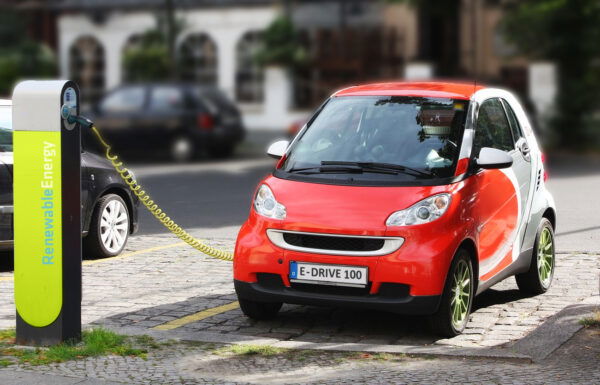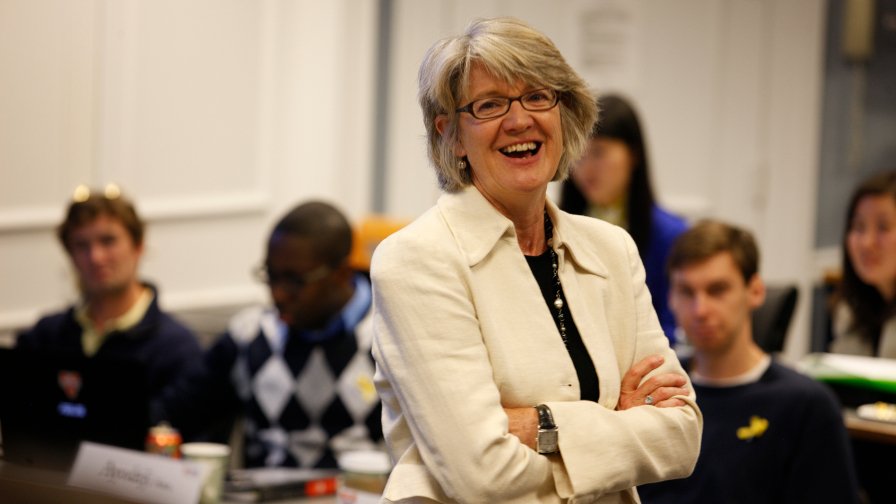
by Paul Simpson — Jun 15, 2021
Simple questions often have complex answers. We have one Earth, but are consuming the resources of 1.6 planets. Most of us understand that we cannot go on like this, but how do we make the changes required to save the world?
It is important that we understand that climate change is complicated, that we refuse to be intimidated by this complexity and that we recognise that we all own this crisis. Abraham Lincoln believed that crises create opportunities. If we can, as Lincoln put it, “disenthrall ourselves from accepted maxims and recognise that new realities require new thinking”, we can design a way of life to emit net zero carbon by 2050.
“If we are to achieve net zero, we need to accelerate changes to the way we live. Climate action isn’t one challenge, it is a myriad of interconnected challenges,” says Emma Copham, Breakthrough Manager at The Carbon Trust, a global, mission-led organisation that works with governments, investors, businesses and organisations to accelerate the delivery of a sustainable, low carbon economy.
Collectively, we need new skills, breakthrough ideas and the willpower to drive change, says Emma.
“This is an existential challenge for humanity,” says David Kester, founder and managing director of DK&A and the Design Thinkers Academy London. “It is also a daunting one: because we need to develop not one solution but many – and to achieve that, we need an army of innovators to help us innovate faster and better than ever before, change agents who can think systemically about the climate challenge.”
To help build that army of innovators – and empower them to accelerate change – the Design Thinkers Academy London and the Carbon Trust are launching a Design Sprint Camp on climate change with a particular focus on net zero. The online bootcamp will encourage change makers to think creatively, collaborate and deliver practical innovations which meet real user needs.
What is at stake at COP26?
The need for faster, better innovation will be one of the underlying themes at the United Nations Climate Change Conference (COP26) which takes place in Glasgow on 1-12 November.
COP26 is set to be the most important global summit since the 51 founding members of the United Nations met for the first time in London in January 1946. American president Joe Biden, who has led the US back into the Paris Agreement on Climate Change, has insisted that “this is the decade of climate change”. But will those words be turned into policies and deeds in Glasgow?
Daniel Boettcher, an environmental consultant and journalist who has reported on previous climate change conferences, says: “At COP26, we will hear much about greater urgency, greater ambition and a green recovery from COVID-19. Countries will indeed have to present more ambitious, meaningful targets that go beyond what was already promised in Paris in 2015. In a decade that may be our last chance to prevent catastrophic or irreversible climate change, near-term commitments will be under particular scrutiny. Whatever targets are set, they need to be tied to a clear roadmap about how they will be achieved.”
It is imperative that the world’s leaders make substantive progress in Glasgow but it is equally imperative that, as individuals, organisations and businesses, we recognise that we need to change too.
This is not a challenge we can outsource to a head of state, a scientist in a white coat, or a CEO. What we need is a responsible revolution in the way we think, live and work, says Kester.
That view is echoed by Bill Gates, co-founder of Microsoft and author of How To Avoid A Climate Disaster, who told Harvard Business Review this spring: “Without innovation, I don’t think we can avoid climate disaster”. Creating zero-carbon substitutes for products and services will require, in his view, a level of innovation far beyond that required to develop COVID-19 vaccines. Gates believes we can avert catastrophe if we take decisive action but admits the task is immense: “It will need to be the most amazing thing humankind has ever done”.
Such urgency and optimism, tempered by realism, is particularly welcome as the media narrative, while dramatically portraying the scale of the crisis, can present climate change as scenes in a spectacular, long-running disaster movie, featuring wildfires in Australia and California, droughts in east Africa, floods in Asia and cyclones in southern Africa. In this context, it is easy for us, as individuals, to feel that this process is out of control and that nothing we do will make a difference.
Nothing could be further from the truth. “It is vital that we all understand why the 2020s has to be the decade we really tackle climate change,” says Copham. “That is why it is encouraging that so many businesses, organisations and governments are setting net zero targets – and it is vital that more of them spell out how they are going to reach them. We know we don’t have much time but it is not too late to accelerate our transition to a low carbon economy.”
From tunnel vision to lateral vision
Emerging technologies and materials can help us find, test and apply new ideas but we also need, Boettcher says, “a whole new mindset. Technologies – both new and established ones – and new materials will certainly play a part but what we really need is new, systemic thinking about the way we live, work and consume impacts the environment.”
If we think holistically about climate change, we can deepen our understanding of the myriad of interconnected challenges and make better, informed choices. Every metric of progress needs to be seen in its true context. Take food miles, for example. Given the greenhouse gas emissions generated by flying food from source to market, minimising – or eliminating – these journeys seems like an obvious gain. Yet tomatoes grown in heated British greenhouses may have a larger carbon footprint than those grown in hotter countries where they grow in the sun. And if Europe stopped importing fruit and vegetables from sub-Saharan Africa, for example, millions of people there could slip back into poverty. Such trade-offs are not, Boettcher says, an excuse to do nothing, but a reminder that we need to understand what we are doing in detail.
Design thinking
That is where Design thinking, with its emphasis on user-centric, creative problem solving, can drive meaningful change. The Plastics Cloud, a project designed to reduce plastic waste, emerged from a Design Thinkers Academy Sprint Camp in 2018, led by software giant SAP which is collaborating with 100 companies in the UK’s Plastic Pact. One of the insights that drove this innovation was research that showed consumers and businesses were confused about which kinds of plastic were recyclable and which weren’t.
“The Plastics Cloud is an example of what we can achieve if we collaborate,” says Kester. “Some aspects of climate change are so large and complex that they require not just innovation but collaboration – and sometimes that will mean cooperating with organisations we have traditionally regarded as competitors.”
In this new mindset, lateral vision is more helpful than tunnel vision. Traditional economic models, which focused on inputs and categorised everything else (including climate change) as an ‘externality’, need reinventing. The pandemic has reminded us that, as individuals, professionals and leaders, we need to look at the world through a wider lens.
A crisis full of opportunities
Climate change statistics often make for grim reading, but the very figures that underline the gravity of the crisis also indicate where we can do significantly better, as these three examples illustrate.
Smartphones
The full lifecycle of smartphones is responsible for 14 million tonnes of CO2 emissions in Europe, larger than the entire carbon budget of Latvia in 2017. Yet if we extended their lifecycle by just one year it would, the European Environmental Bureau (EEB) estimates, reduce those emissions by 2 million tonnes of CO2e, equivalent to taking one million cars off the road.

Fashion
Four out of ten items of clothing bought in some countries are never worn, according to the World Bank. As the fashion industry is responsible for around one tenth of global carbon emissions – more than aviation and shipping combined – we could make a meaningful difference if we only bought clothes we definitely intend to wear. Between 2000 and 2015, the Ellen MacArthur Foundation estimates, the number of times we wore an item of clothing fell by 36%.
Commuting
Before the pandemic, it is estimated that the UK’s commute to work caused the emission of 18 million tonnes of CO2e a year, roughly 5% of the country’s total emissions. This partly reflected the fact that only 7% of Britons commuted on public transport, compared to 28% in Germany and 31% in China (source). There are conflicting signals about how many of us will keep working from home – and for how long – but blended working should reduce commuting’s carbon footprint, especially if more of us walk, cycle or use public transport.
These are just three areas where our behaviour can have a significant impact although, as Boettcher says, we should not underestimate the challenges ahead.
For consumers, changes that require the least adjustment to behaviour are the most likely to succeed. Switching to a renewable energy tariff means you still get your electricity out of a wall socket. Your toaster or TV works just the same. Switching to an electric car is more challenging. It requires a new routine with concerns about where to charge and how far you can get.
“There is a cost barrier too. Pricing and perceptions of value are critical when it comes to consumer behaviour change relating to sustainable choices, particularly if we look at how mass markets respond rather than environmental pioneers or early adopters. Even consumers who see themselves as committed environmentalists may be more driven by convenience, familiarity and cost when it comes to actual purchasing decisions,” adds Boettcher.

Yet, changes in behaviour are critical, Copham says, if we are to succeed: “Over 40% of the abatement from now to 2035, in the Climate Change Committee’s scenarios for required actions for the UK to reach net zero, involves at least some degree of change from consumers, whether that be driving an electric car or installing a heat pump instead of a gas boiler. Our choices as consumers can reduce demand and improve efficiency.
Shifting quickly towards healthier diets, flying less often, choosing products that last longer – and therefore make more efficient use of our resources – will all help. We must remember though that inducing behavioural change is notoriously difficult, so we can’t rely on that alone. We need data-driven decision making, visible peer pressure and strong government policies to support the transition, as the Energy Research Partnership highlights in its recent report.”
To make these changes consumers need easy access to trusted, accurate information on the climate change impacts of products and services. There are apps, such as CoGo which links spending data to environmental impact. Two-thirds of consumers in North America and Europe support carbon labelling, according to a Carbon Trust survey. The Carbon Trust launched one of the first product carbon labelling schemes back in 2007 and it has now been adopted by such diverse companies as Amcor, Danone, LG Electronics, Quorn, Samsung, Accolade Wines, Amazon Devices and Tetra Pak.
The return on investment in net zero
Taking the lead on climate change has, for many companies, become a matter of enlightened self-interest.
There is a real opportunity for companies to differentiate themselves by offering low carbon products, says Copham. In our survey of top British companies, 72% believed that disclosing their environmental and social impact would increase their brand value, 31% see financial benefits and 21% see increased value of their company.
That message does seem to be getting through. By March 2021, according to the Energy and Climate Intelligence Unit and Oxford Net Zero, more than 2,000 of the world’s largest public companies, representing annual sales of $14trn, had committed to reaching net zero emissions.
Some organisations have publicly set audacious targets and spelled out how they plan to achieve them, which means their progress can be clearly measured. Danish renewable energy group Ørsted aims to become carbon neutral across its operations by 2025, across its entire value chain by 2040 and reach net zero by 2050. This would complete a remarkable transformation of what was once Denmark’s largest oil and gas company. In 2008, oil and gas generated 85% of Ørsted’s power. By 2019, 85% of its energy came from renewable sources.
There are many other encouraging initiatives in other sectors and countries – from zero-waste stores in Canada and investment in net zero buildings in Norway to roads partially made out of plastic in the UK. Although these projects do not get as much media traction as footage of climate catastrophes, they highlight two very powerful truths: they show that something can be done – and that we must do more.
“If we accept that humanity has created this crisis,” says Kester, “then implicit in that recognition is that humanity can solve this crisis. That will require a responsible revolution in the way we think, live and work but, if we are to limit global warming to 1.5oC above pre-industrial levels, avoiding the most dangerous and irreversible effects of climate change, we have to think – and act – now.”


